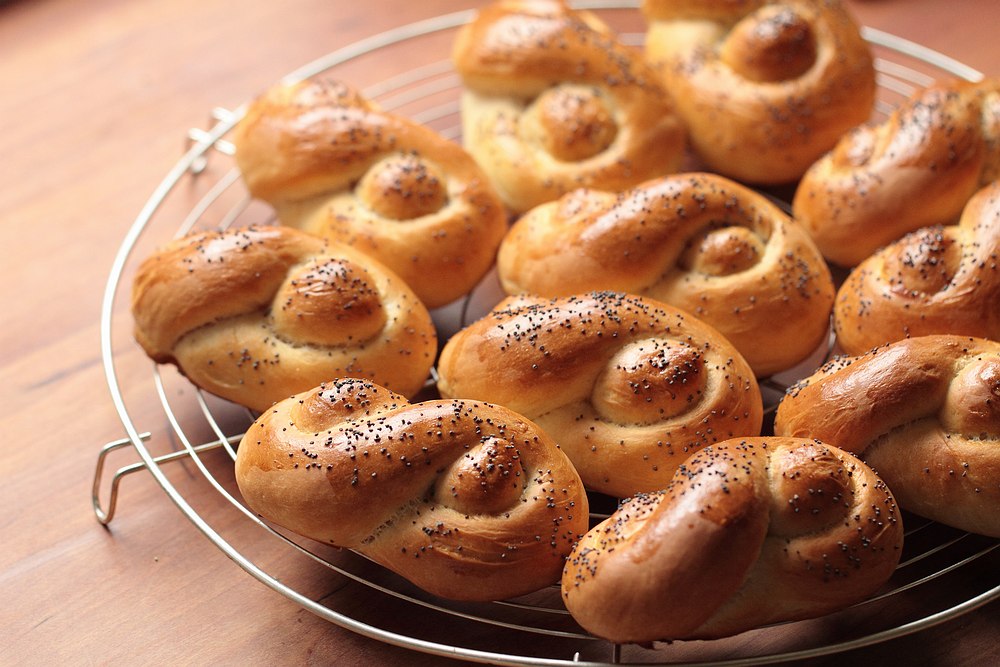 When I teach a gardening course, it always includes lunch. I serve a freshly picked mixed salad from the garden to show off the variety of greens that you can grow. This is especially impressive if the course is in March/April or November as people often don’t realize that with a little planning and the protection of a cold frame or a fleece cover, it is possible to harvest fresh leaves even that early or late in the season. I also make herby cottage cheese and serve preserves made from our own fruit. And I bake rolls.
When I teach a gardening course, it always includes lunch. I serve a freshly picked mixed salad from the garden to show off the variety of greens that you can grow. This is especially impressive if the course is in March/April or November as people often don’t realize that with a little planning and the protection of a cold frame or a fleece cover, it is possible to harvest fresh leaves even that early or late in the season. I also make herby cottage cheese and serve preserves made from our own fruit. And I bake rolls.
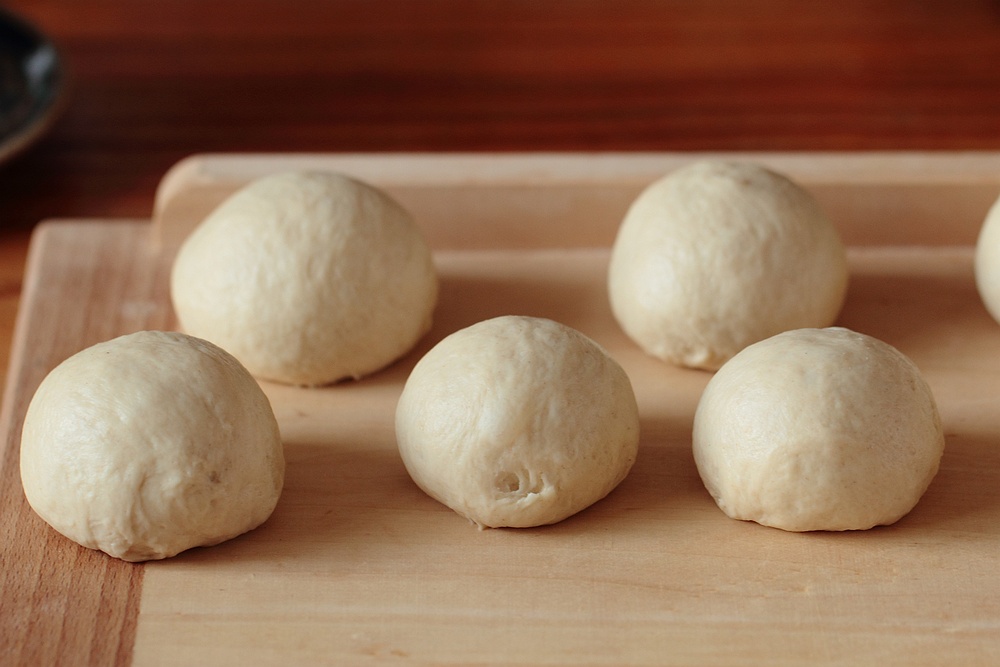
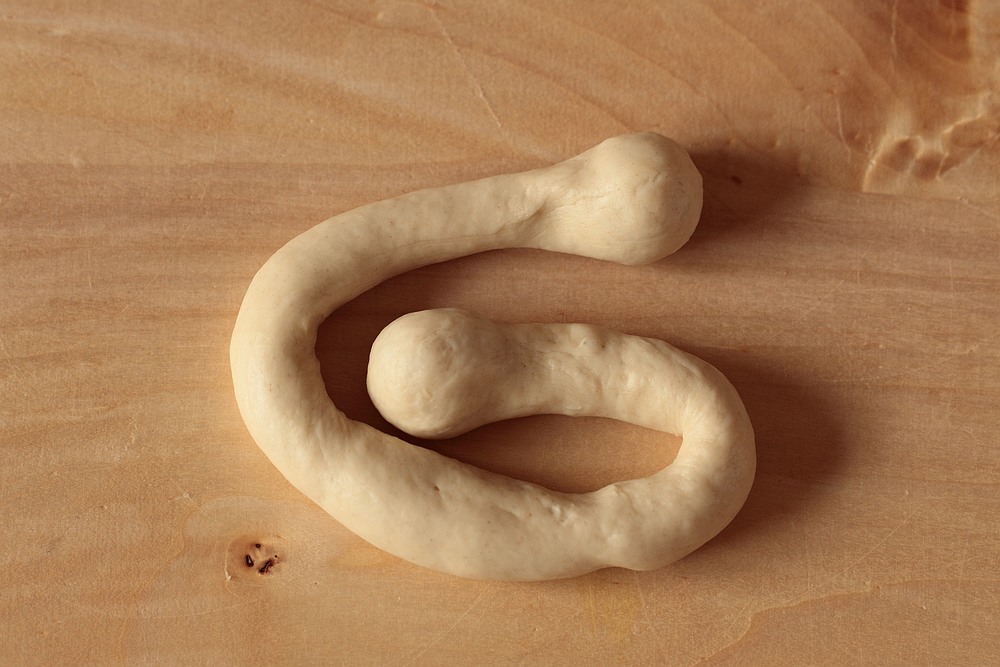
 The dough is enriched with milk and butter, but is not too rich. The rolls are so good you can eat them by themselves and they don’t turn stale quickly, so I can bake them a day in advance. It is worth mastering the shaping technique (which is not difficult) because it makes the rolls look impressive and beyond doubt home-made. I learned the shaping on a baking course at the Driekant bakery in Zutphen and apparently it is something all bakers have to learn but yet I have never see rolls shaped this way for sale. Other times I make simple braids that are also very pretty.
The dough is enriched with milk and butter, but is not too rich. The rolls are so good you can eat them by themselves and they don’t turn stale quickly, so I can bake them a day in advance. It is worth mastering the shaping technique (which is not difficult) because it makes the rolls look impressive and beyond doubt home-made. I learned the shaping on a baking course at the Driekant bakery in Zutphen and apparently it is something all bakers have to learn but yet I have never see rolls shaped this way for sale. Other times I make simple braids that are also very pretty.
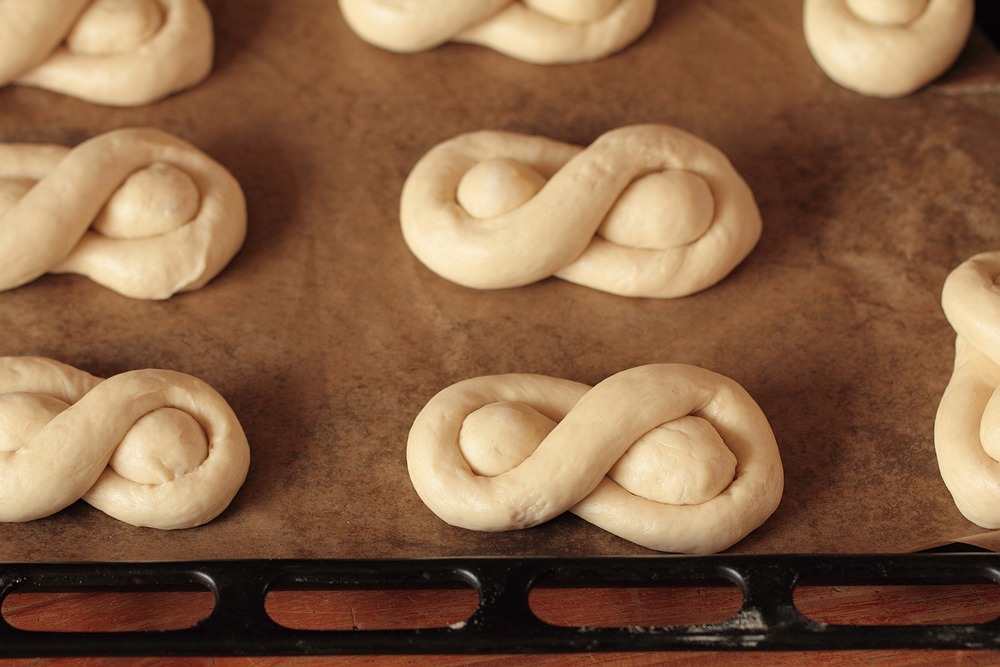
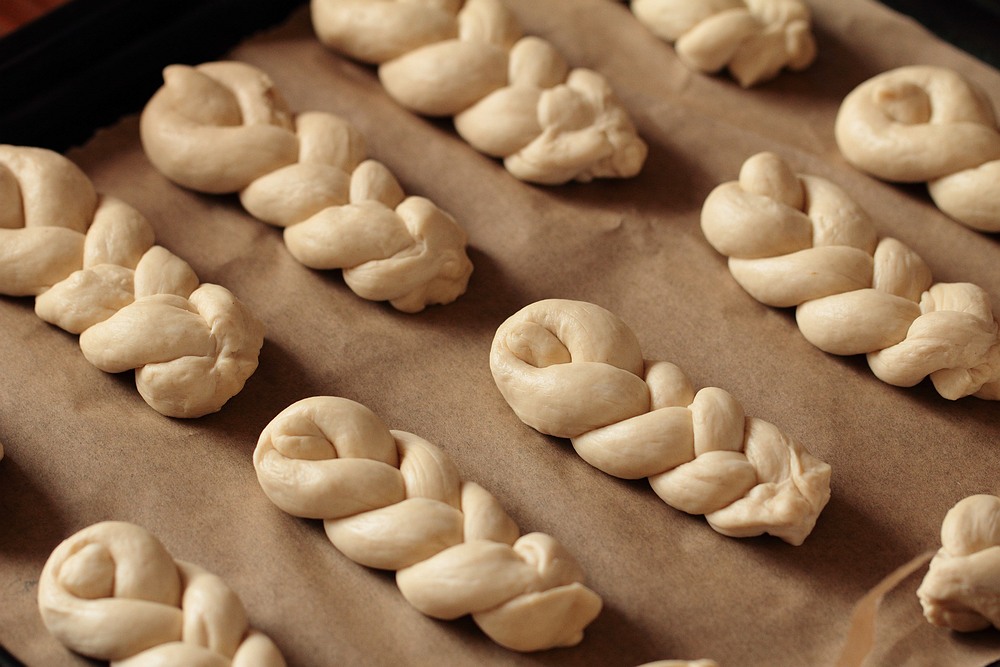
Braided bread rolls
Adapted from Vreni de Jong: Wat eten we vandaag
Makes 10 to 12 rolls
500 g all-purpose or unbleached flour
½ tbsp dry yeast
300 ml milk, tepid
50 g cold butter
½ tbsp salt
Glaze:
1 egg yolk, lightly beaten
sesame seed, poppy seed or caraway seeds (optional)
Dissolve the yeast in the milk (the milk must not be too warm or the temperature will kill the yeast). Keep about 100 g flour apart and put the rest in a large bowl. Make a well in the center and pour in the warm milk. Mix in some of the flour to make a sponge in the middle of the bowl. Slice the butter and put the slices around the sponge (the warmth of the sponge will soften the butter slightly and make it easier to incorporate) and sprinkle the salt on top of the butter. Cover the bowl with plastic and leave for about 20 minutes, until bubbles have formed. Then mix everything together and knead until the dough feels silky and smooth. Add as much of the flour as necessary to keep the dough from sticking, but no more ( you will probably not use all the flour). Cover the bowl and set aside to rise until doubled in bulk, an hour or more depending on the room temperature. Because of the butter content, it is better to let the dough rise in a room that is too warm.
Divide the dough into 10 or 12 equal pieces. Roll each piece of dough into a tight ball by rolling it on a wooden surface under the palm of your hand while pressing your thumb from the side. I find that it’s easier to roll the dough on a surface that has not been dusted with flour.
Roll each ball into a rope, about 30 cm long and slightly thicker at both ends. Do this gradually, letting the dough rest for a little while between rolling. Fold the ropes as shown, twist one side into a loop and pull it over one of the ends. I hope the pictures help.
Alternatively you can make braided rolls or leave the balls as they are for less elaborate rolls.
Preheat your oven to 225 degrees Celsius (435 Fahrenheit).
Put the rolls on a baking sheet covered with parchment and let rise loosely covered with plastic, about 20 minutes or until they almost double in volume. Glaze with the egg yolk and sprinkle with the seeds, if desired.
Bake for 15 to 20 minutes, until golden. Let cool on a wire rack.
7 comments for “Braided bread rolls”